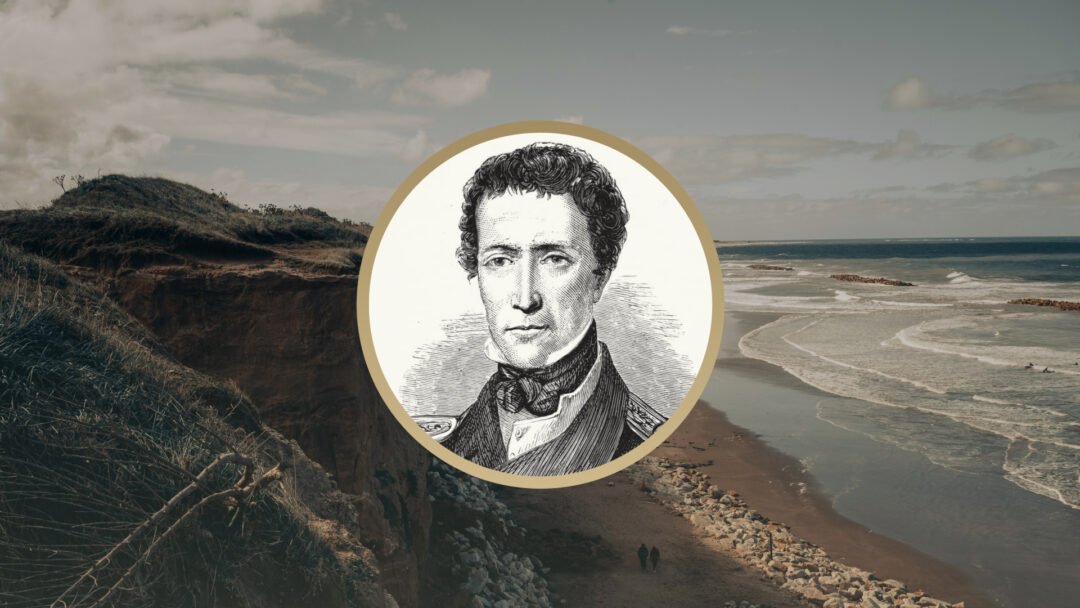Although our eternal God lives outside of time, He created man to live inside the bounds of time and space. This is one reason that He created the heavenly bodies. Genesis 1:14–16 records the activity of the fourth day of Creation, “And God said, Let there be lights in the firmament of the heaven to divide the day from the night; and let them be for signs, and for seasons, and for days, and years: And let them be for lights in the firmament of the heaven to give light upon the earth: and it was so. And God made two great lights; the greater light to rule the day, and the lesser light to rule the night: he made the stars also.”
The sun, the moon, and the stars are given to us not only for light, but to regulate the passage of time. The rotation of the earth upon its axis determines the day. The revolution of the moon around the earth determines the month. The revolution of the earth around the sun determines the year. These mysteries were unlocked by a brilliant Christian mathematician and astronomer named Johannes Kepler who explained to the world the order and harmony of the planetary system.
For many centuries, a true understanding of the movements of the heavenly bodies were shrouded in mystery. No doubt, Adam and perhaps even Noah understood planetary motion. But after the tower of Babel, Egyptian and Sumerian astronomers, although brilliant in many ways, lost the real truths of the universe. They were able to chart the movements of the moon and the stars, but the movements of the planets baffled even the greatest minds. Thus, these strange heavenly bodies were called planets, which means “the wanderers”!
But 5,500 years after the creation of the world, God raised up a series of extraordinary men such as Galileo Galilei, Nicolaus Copernicus, Tycho Brahe, and Johannes Kepler—men who were willing to question and even challenge ancient theories of the heavens.
First, Copernicus questioned the ancient geocentric model of the solar system, a system advocated long before by Ptolemy, an ancient mathematician. Ptolemy’s model asserted that the sun revolved around the earth with the planets moving in strange and erratic loops called “epicycles.” Copernicus proposed the novel idea that the ancient Greeks had it backwards! What if the earth and all the planets orbited the sun instead?
Next, Galileo defended Copernicus’s heliocentric system and invented an improved telescope. With his telescope’s improvements, he discovered the rings of Saturn, the moons of Jupiter, and the phases of Venus.
The third scientist to influence Kepler was Tycho Brahe, a brilliant but eccentric Danish astronomer and mathematician who also dabbled in alchemy and astrology. He faithfully observed the heavens and compiled a very detailed, thorough chart of his astronomical observations. He recorded the event of his watching a supernova in 1572. To the end of his days, Tycho could never give up a geocentric model of the universe and vehemently opposed the Copernican heliocentric model. His own model of the solar system depicted the planets orbiting the sun, while the sun was viewed as orbiting the earth.
Certainly, Johannes Kepler learned from each of these earlier men. A sincere, devout Christian and firm Lutheran, Kepler applied the Bible to every area of study. He was born on December 27, 1571, in the southern part of Germany. Although born prematurely at seven months, he survived infancy in spite of possessing very delicate health. When he was a young boy, an attack of the smallpox almost deprived him of his eyesight.
Even as a young boy, Kepler loved gazing at the heavens. In later life, he recalled distinctly the day that his mother took him to a high hilltop to observe a great comet in 1577. When he was nine years old, he also observed a lunar eclipse. Despite physical weakness and impaired vision, young Kepler showed signs of great intellectual power. He studied Latin as well as philosophy and theology. As a young man, he was a strong advocate for the Copernican system of interpreting the heavenly bodies. He saw no contradiction between a heliocentric universe and the Bible. He almost became a Lutheran pastor but became convinced that he could serve God faithfully as a mathematician and astronomer.
In his youth, Kepler dabbled in astrology, seeking to use the stars to predict the future. He later abandoned this pursuit as unproductive speculation, despite the great demand and financial gain for astrologers at the time. Kepler believed that astronomy, not astrology, was the most important field for a true understanding of the heavens. The phrase “I am merely thinking God’s thoughts after Him” has been attributed to Kepler, probably as a compilation of several similar statements.
Over the course of a long and fruitful life, Kepler made tremendous advances in the understanding of the heavens. He took the careful observations of Tycho and used them to plot the positions of the stars and planets. Through these observations, he formulated the Laws of Planetary motion, suggesting for the first time in history that the planets move in elliptical orbits around the sun, and that the earth moves in a similar pattern. His explanations brought order out of chaos, as Kepler advocated that a God of order would certainly create an orderly universe.
Johannes Kepler also made advances in the understanding of optics. In addition to improving the telescope, he was the first to propose that the lens of the human eye inverted the image on the retina, an image that was then corrected in the brain. This theory laid the groundwork for photography.
Throughout his life, Kepler suffered many personal and family trials. He struggled to provide well for his family because, although scholars throughout Europe were intrigued by Kepler’s discoveries, it was hard for him to earn a living through his scientific work. His firm Protestant views prohibited him from taking any position in the strong Catholic countries of Italy or France. Emperors and nobles would pay him to make astrological predictions, but they saw little value in theoretical astronomy. Although Kepler was often promised a salary, rarely was he paid on time, if at all.
Kepler’s first wife, Barbara, died in 1611. She had been smitten with a high fever, and her death left him alone to care for two young children. Two years later, Kepler remarried a young woman named Susanna, who was eighteen years his junior. The Lord blessed their union with six more children, although three of them died young due to childhood illnesses. The Thirty Years’ War forced Kepler to move his family several times in order to keep them out of harm’s way and to provide them with means of support.
Johannes Kepler lived and died in relative obscurity. It was only after his death that the greatness of his work was fully appreciated. He saw harmony in God’s world, and he articulated the perfection of the way that the eternal God of the universe had set the heavenly bodies in motion as orderly timekeepers for days, months, and years for time-bound mankind.
In one of his greatest writings, Harmonice Mundi (Latin for The Harmony of the World), Kepler wrote of the Creator, “Out of Him, through Him, and in Him are all things, every perception and every knowledge, that of which we are profoundly unaware and that of which we know, oh, so little, in comparison with all that is beyond our reach. To Him be the praise, the honor, and the glory from eternity to eternity.”
Sources and Further Reference:
Baumgardt, Carola. Johannes Kepler: Life and Letters. New York, NY: Philosophical Library, 1972.





